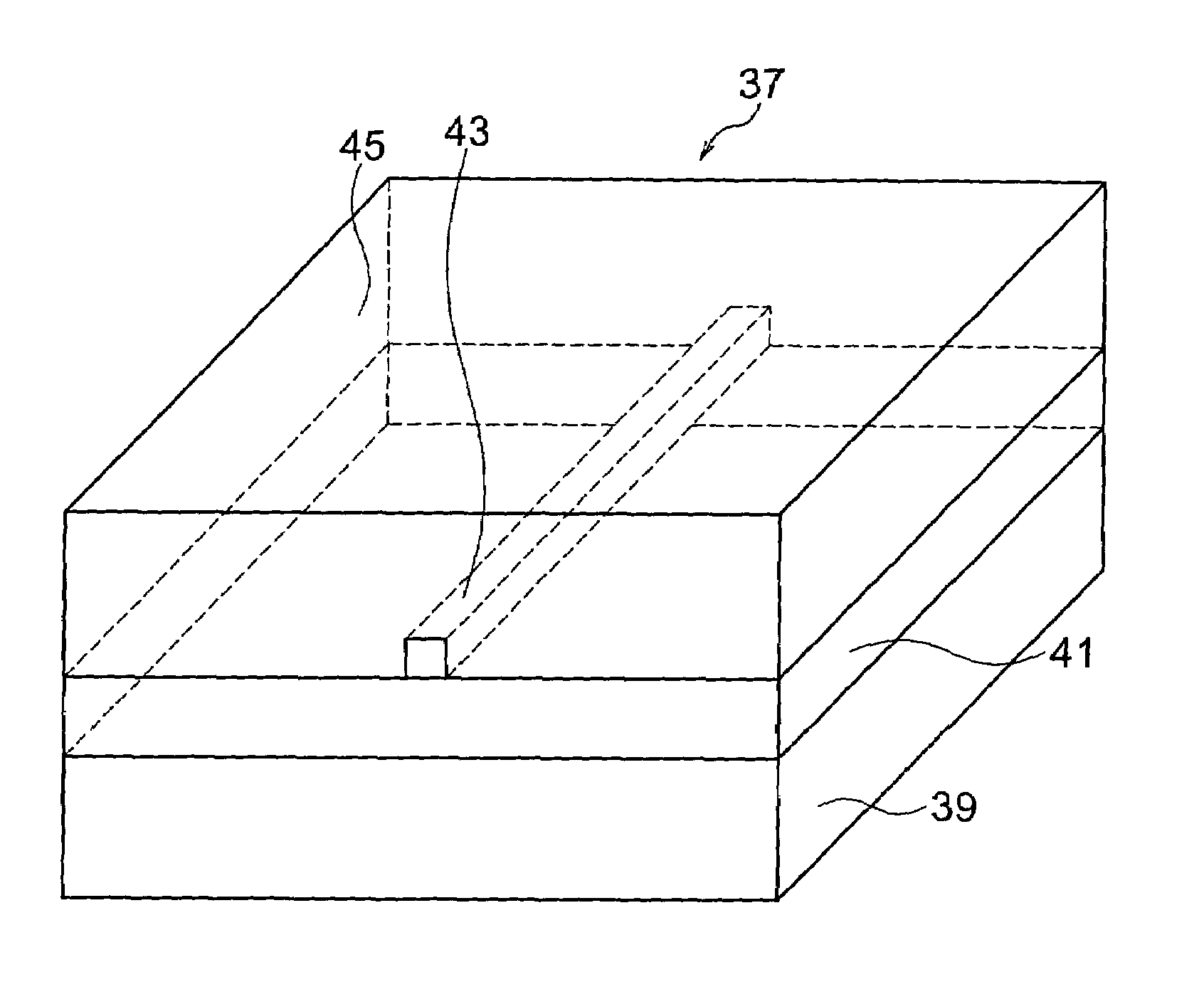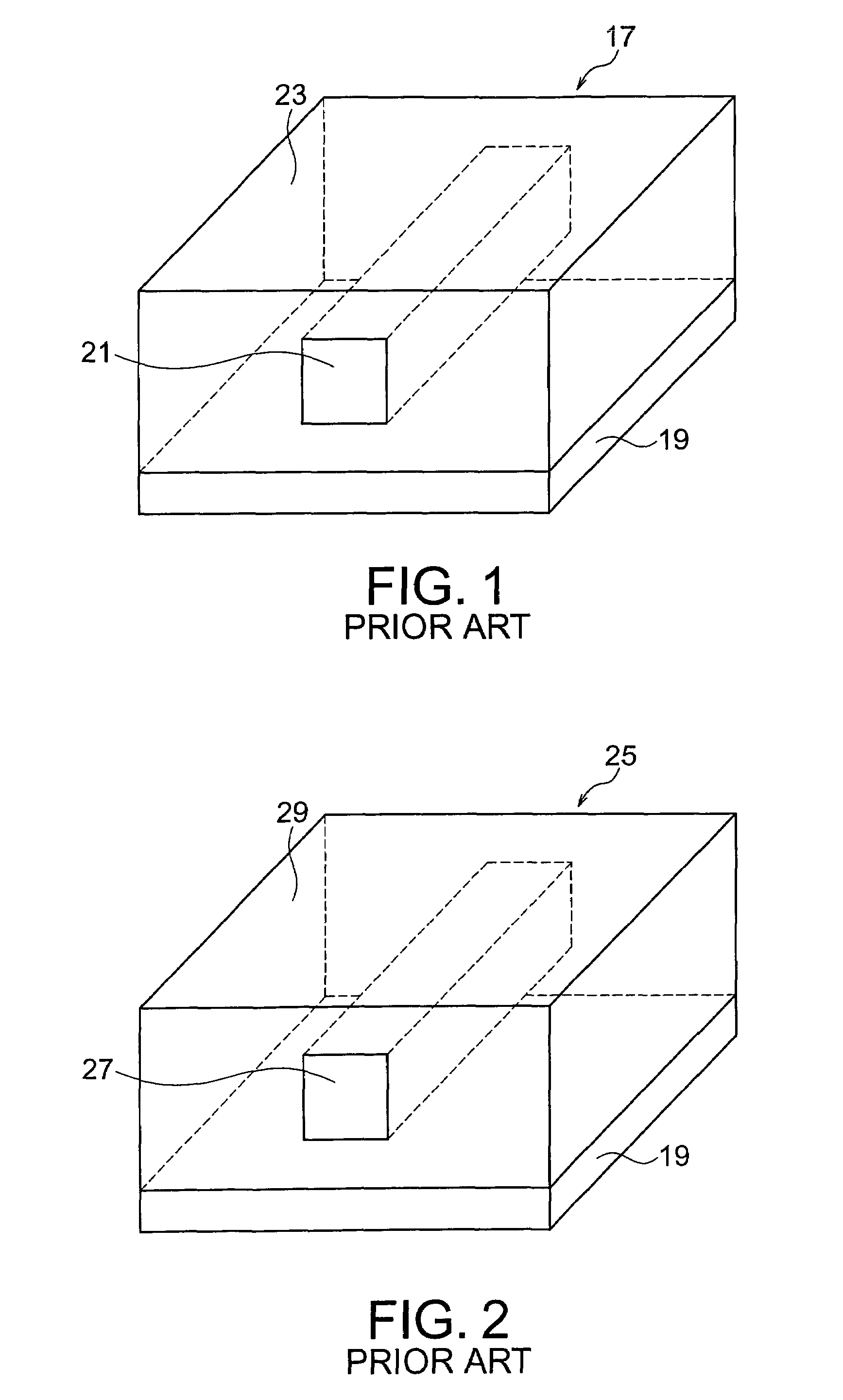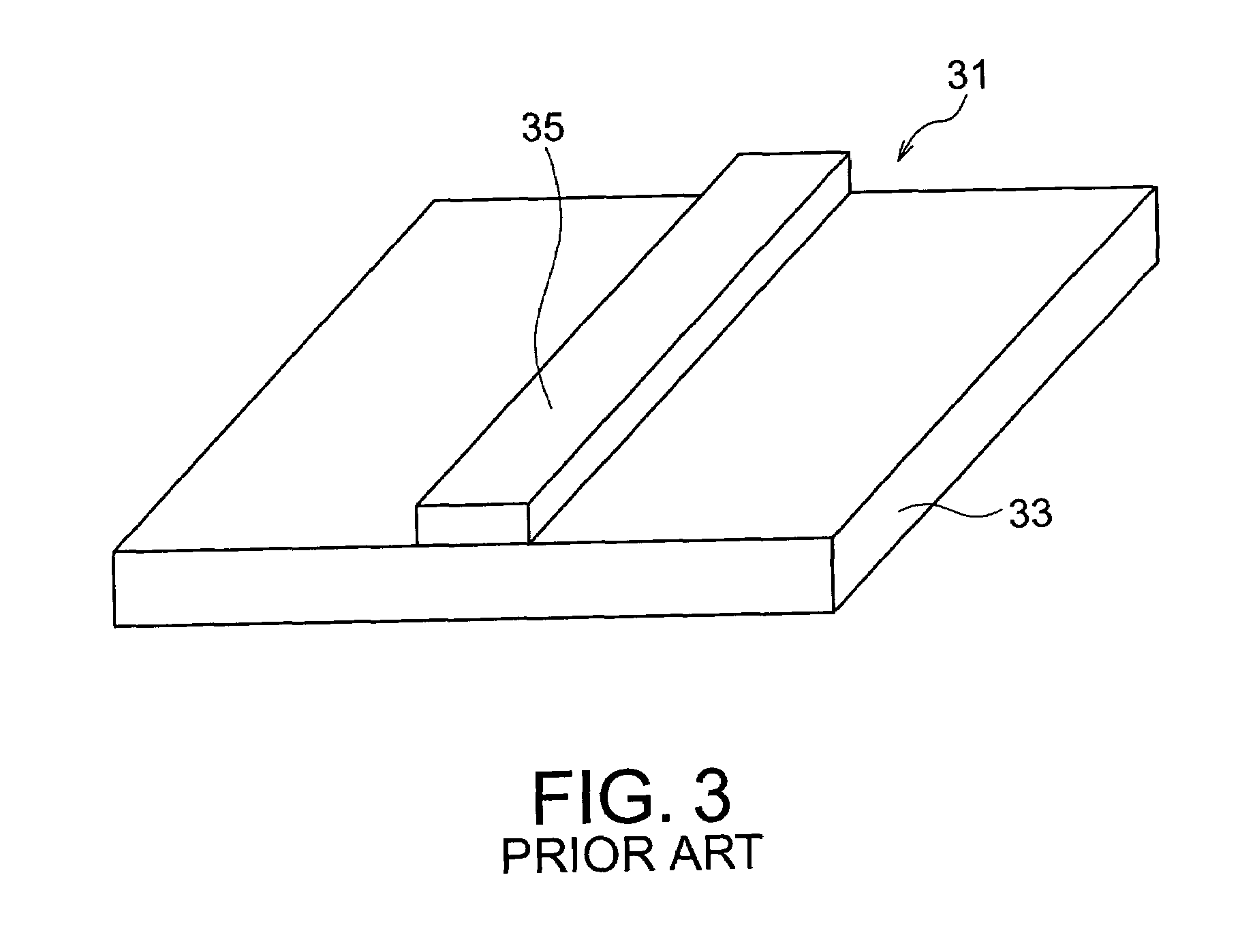Waveguide structure and method of manufacturing the same
a manufacturing method and waveguide technology, applied in the direction of optical waveguide light guides, instruments, nanotechnology, etc., can solve the problems of large bending loss, weak coupling effect of light to the core by the difference in refractive index, and restriction on the bending size of the waveguide, so as to improve coupling with optical fiber, the effect of small propagation loss and small radius of curvatur
- Summary
- Abstract
- Description
- Claims
- Application Information
AI Technical Summary
Benefits of technology
Problems solved by technology
Method used
Image
Examples
Embodiment Construction
[0039]For a better understanding of the present invention, waveguides according to the related art will be explained using FIGS. 1 to 3 before explaining the embodiments of the present invention.
[0040]With reference to FIG. 1, a silica-based waveguide 17 of (i) has a core 21 and a cladding layer 23 made of silica glass (SiO2) formed on a substrate 19. By doping the core 21 with Ge or the like, a difference is made in refractive index between the core 21 and the cladding layer 23 of about 2 to 5% in order to guide light. It is widely used for a planer lightwave circuit (PLC). An AWG, which is used widely for communications, is achieved using this technique.
[0041]With reference to FIG. 2, a polymer-based waveguide 25 in (ii) has a core 27 and a cladding layer 29, both made of a polymer material such as PMMA or polyimide: a minute difference is made in refractive index between the material forming the core 27 and the material forming the cladding layer 29 in order to guide light.
[0042]...
PUM
| Property | Measurement | Unit |
|---|---|---|
| refractive index | aaaaa | aaaaa |
| refractive index | aaaaa | aaaaa |
| coupling length | aaaaa | aaaaa |
Abstract
Description
Claims
Application Information
 Login to View More
Login to View More - R&D
- Intellectual Property
- Life Sciences
- Materials
- Tech Scout
- Unparalleled Data Quality
- Higher Quality Content
- 60% Fewer Hallucinations
Browse by: Latest US Patents, China's latest patents, Technical Efficacy Thesaurus, Application Domain, Technology Topic, Popular Technical Reports.
© 2025 PatSnap. All rights reserved.Legal|Privacy policy|Modern Slavery Act Transparency Statement|Sitemap|About US| Contact US: help@patsnap.com



